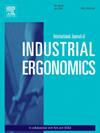Recovery from startle and surprise: A survey of airline pilots' operational experience using a startle and surprise management method
IF 2.5
2区 工程技术
Q2 ENGINEERING, INDUSTRIAL
International Journal of Industrial Ergonomics
Pub Date : 2025-03-17
DOI:10.1016/j.ergon.2025.103733
引用次数: 0
Abstract
A significant safety challenge airline pilots contend with is the possibility of experiencing startle and surprise. These are cognitive-emotional responses that may temporarily impair performance and that have contributed to multiple fatal loss of control events. Several self-management methods exist that are intended to facilitate recovery from startle and surprise, but these have only been tested in simulator experiments. The current study addresses this research gap by surveying the perceptions of 239 airline pilots on the utility and benefit of a method which they use in operational practice– the “Reset Method”. Overall, the survey results revealed that pilots felt the method improved mental preparedness, and reduced stress. A reported reason for not applying the method was the urge to act quickly. In addition, not all steps of the method were applied equally, and some pilots found the method difficult to fit into the existing procedures of several time-critical scenarios (e.g., aircraft upsets and emergency landings). We recommend training self-management methods in scenarios which carry the most risk of negative effects of startle and surprise. We also recommend instilling awareness of the ‘startle paradox': self-management techniques are most difficult to apply in situations where they are most beneficial. Method shortening and simplification may facilitate application. Future research should focus on refining the method's implementation, addressing the startle paradox, and understanding the transferability of startle and surprise management methods to other safety critical industries defined by complex sociotechnical interactions.
求助全文
约1分钟内获得全文
求助全文
来源期刊
CiteScore
6.40
自引率
12.90%
发文量
110
审稿时长
56 days
期刊介绍:
The journal publishes original contributions that add to our understanding of the role of humans in today systems and the interactions thereof with various system components. The journal typically covers the following areas: industrial and occupational ergonomics, design of systems, tools and equipment, human performance measurement and modeling, human productivity, humans in technologically complex systems, and safety. The focus of the articles includes basic theoretical advances, applications, case studies, new methodologies and procedures; and empirical studies.

 求助内容:
求助内容: 应助结果提醒方式:
应助结果提醒方式:


